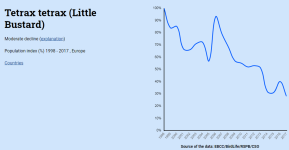Our first visit after a 3-year absence, cycling and walking locally from 12 to 26 March. We saw 100 species, albeit that one was an escape!
Notable (for us) sightings included Black-necked Grebes (five on the main saltpans), Ospreys (two on the mudflats from Vila Real harbour, one on the resting tower and one fishing for 30 minutes next to the main road to Castro Marim), two Glossy Ibis at Altura reservoir, two Collared Pratincoles on mudbanks from Monte Gordo station, several Caspian Terns here and there, Booted Eagle (seen twice over the saltworks entrance track), and a Black-eared Wheatear (next to the saltworks entrance track).
Our best individual location was the pine wood west of Monte Gordo. On the pool (‘Aldea Nova Lake’), there were six Red-crested Pochards (4m, 2f) as well as a Purple Heron and a Purple Swamphen lurking on the edge of the reeds. Nearby, Crested Tits, Short-toed Treecreepers and Iberian Magpies were plentiful. One day there, we heard some loud raucous sounds and at least two Green Woodpeckers began calling in alarm. We then saw a flash of red and blue, and a Scarlet Macaw appeared just above us! Sorry we have no photos, but hopefully the owner has now retrieved it. After that, a Great-spotted Woodpecker and Common Cuckoo were a bit of an anti-climax.
Unfortunately we had no Stone-curlews or Little Bustards at previous reliable sites.
Birdwatching from the platform at Monte Gordo station is much improved, as someone has cut down some of the vegetation. Binoculars OK for some good views, but a telescope even better. Numerous Flamingoes, Stilts, Avocets etc.
Good to see that cycle lanes are being constructed between Sao Bartolomeu and Castro Marim.
We know that this isn’t a general tourist website, but we can recommend three Monte Gordo restaurants - O Jaime, Vale do Douro, and O Tapas. All good for meat and fish dishes.
Also, Ruiz Bikes (next to Blue Parrot restaurant) is good for cycle hire (35 Euros for 11 days).
Dave Riley and Andrea Jackson
Notable (for us) sightings included Black-necked Grebes (five on the main saltpans), Ospreys (two on the mudflats from Vila Real harbour, one on the resting tower and one fishing for 30 minutes next to the main road to Castro Marim), two Glossy Ibis at Altura reservoir, two Collared Pratincoles on mudbanks from Monte Gordo station, several Caspian Terns here and there, Booted Eagle (seen twice over the saltworks entrance track), and a Black-eared Wheatear (next to the saltworks entrance track).
Our best individual location was the pine wood west of Monte Gordo. On the pool (‘Aldea Nova Lake’), there were six Red-crested Pochards (4m, 2f) as well as a Purple Heron and a Purple Swamphen lurking on the edge of the reeds. Nearby, Crested Tits, Short-toed Treecreepers and Iberian Magpies were plentiful. One day there, we heard some loud raucous sounds and at least two Green Woodpeckers began calling in alarm. We then saw a flash of red and blue, and a Scarlet Macaw appeared just above us! Sorry we have no photos, but hopefully the owner has now retrieved it. After that, a Great-spotted Woodpecker and Common Cuckoo were a bit of an anti-climax.
Unfortunately we had no Stone-curlews or Little Bustards at previous reliable sites.
Birdwatching from the platform at Monte Gordo station is much improved, as someone has cut down some of the vegetation. Binoculars OK for some good views, but a telescope even better. Numerous Flamingoes, Stilts, Avocets etc.
Good to see that cycle lanes are being constructed between Sao Bartolomeu and Castro Marim.
We know that this isn’t a general tourist website, but we can recommend three Monte Gordo restaurants - O Jaime, Vale do Douro, and O Tapas. All good for meat and fish dishes.
Also, Ruiz Bikes (next to Blue Parrot restaurant) is good for cycle hire (35 Euros for 11 days).
Dave Riley and Andrea Jackson





